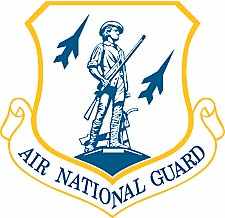"FlyAwake" Produced By Air National Guard
 A new Web-based program is helping
military pilots and aircrews "FlyAwake," thanks to the combined
efforts of the District of Columbia Air National Guard's 201st
Airlift Squadron and the National Guard Bureau. "We were noticing
the number of fatigue-related mishaps were quite high, and we
needed to do something about it," said Air Force Capt. Lynn Lee.
"So we took a look at what was out there, and the 201st Airlift
Squadron's fatigue modeling program seemed to have the answer."
A new Web-based program is helping
military pilots and aircrews "FlyAwake," thanks to the combined
efforts of the District of Columbia Air National Guard's 201st
Airlift Squadron and the National Guard Bureau. "We were noticing
the number of fatigue-related mishaps were quite high, and we
needed to do something about it," said Air Force Capt. Lynn Lee.
"So we took a look at what was out there, and the 201st Airlift
Squadron's fatigue modeling program seemed to have the answer."
Lee is a flight safety officer with the Air National Guard
Safety Directorate at Andrews Air Force Base, Md. The 201st Airlift
Squadron based there provides short-notice worldwide air
transportation for the executive branch, congressional members,
Defense Department officials and high-ranking U.S. and foreign
dignitaries.
In both military and commercial viation, Lee said, pilots and
other aircrew members are required to have specific rest periods
prior to flying. This can be challenging for aircrew members who
transit many time zones or attempt to sleep in less-than-restful
environments.
Research has shown that as fatigue goes up, cognitive
effectiveness goes down, and the risk of an accident increases
exponentially. "We want to stop that before it even gets to the
pilots," she said. "So we're backing it up to the mission planning
stage."
Air Force and Navy accident investigations have used fatigue
modeling for some time to determine if fatigue was a factor, she
noted. The new Web-based program gives squadron commanders and
mission schedulers easy access and quick responses. In 2007, a
safety idea from the 201st Airlift Squadron's commander, Air Force
Col. Gary Akins, led to creation of a proactive fatigue modeling
program to allow identification and mitigation of high-risk fatigue
areas prior to mission departure. Walter Reed Army Research
Institute had developed a set of algorithms, Lee said, which are
extremely accurate in predicting fatigue, given an individual's
sleep and work history.
To mitigate a projected fatigue risk, the 201st Airlift Squadron
would add a crew member or shift take-off or landing times if
possible, she added, and would design nap rotations to minimize
fatigue at the critical events during the flight.
 "The program was shown [to be] very
successful at the 201st, ... [and] we used it for about six
months," Lee said. "At that point, Lt. Col. Ed Vaughan, our
previous Air National Guard chief of flight safety, spearheaded
bringing it to the rest of the Guard."
"The program was shown [to be] very
successful at the 201st, ... [and] we used it for about six
months," Lee said. "At that point, Lt. Col. Ed Vaughan, our
previous Air National Guard chief of flight safety, spearheaded
bringing it to the rest of the Guard."
In 2008, the Defense Safety Oversight Council funded
joint-service implementation of the program, under the name
"FlyAwake." Feedback on the test site from flight surgeons,
physiologists, schedulers and pilots is being incorporated into the
release next month of "FlyAwake 2.0." The new version also will
include a new intelligent sleep model based on crew surveys,
technical studies and other data, Lee said.
A variation of FlyAwake, dubbed WorkAwake, also has the
potential to help thousands of Defense Department shift workers,
Lee said. This shift-work analyzer would provide commanders with
actionable intelligence to help in designing schedules more
effectively. As much potential benefit as the FlyAwake program
holds, there's no push to make it mandatory, Lee said.
"Eventually, tools like this will become part of the safety
culture of the flying community," she said. "The first step is to
get buy-in at all levels and demonstrate the program's
efficacy.
"Our feeling," she continued, " ... is if we come up with a good
product that helps the war fighter, it will get used."
 Classic Aero-TV: VerdeGo Debuts VH-3 Hybrid-Electric Powerplant
Classic Aero-TV: VerdeGo Debuts VH-3 Hybrid-Electric Powerplant NTSB Prelim: Grumman American Avn. Corp. AA-5B
NTSB Prelim: Grumman American Avn. Corp. AA-5B ANN's Daily Aero-Linx (12.02.25)
ANN's Daily Aero-Linx (12.02.25) Aero-News: Quote of the Day (12.02.25)
Aero-News: Quote of the Day (12.02.25) Aero-News: Quote of the Day (12.03.25)
Aero-News: Quote of the Day (12.03.25)




